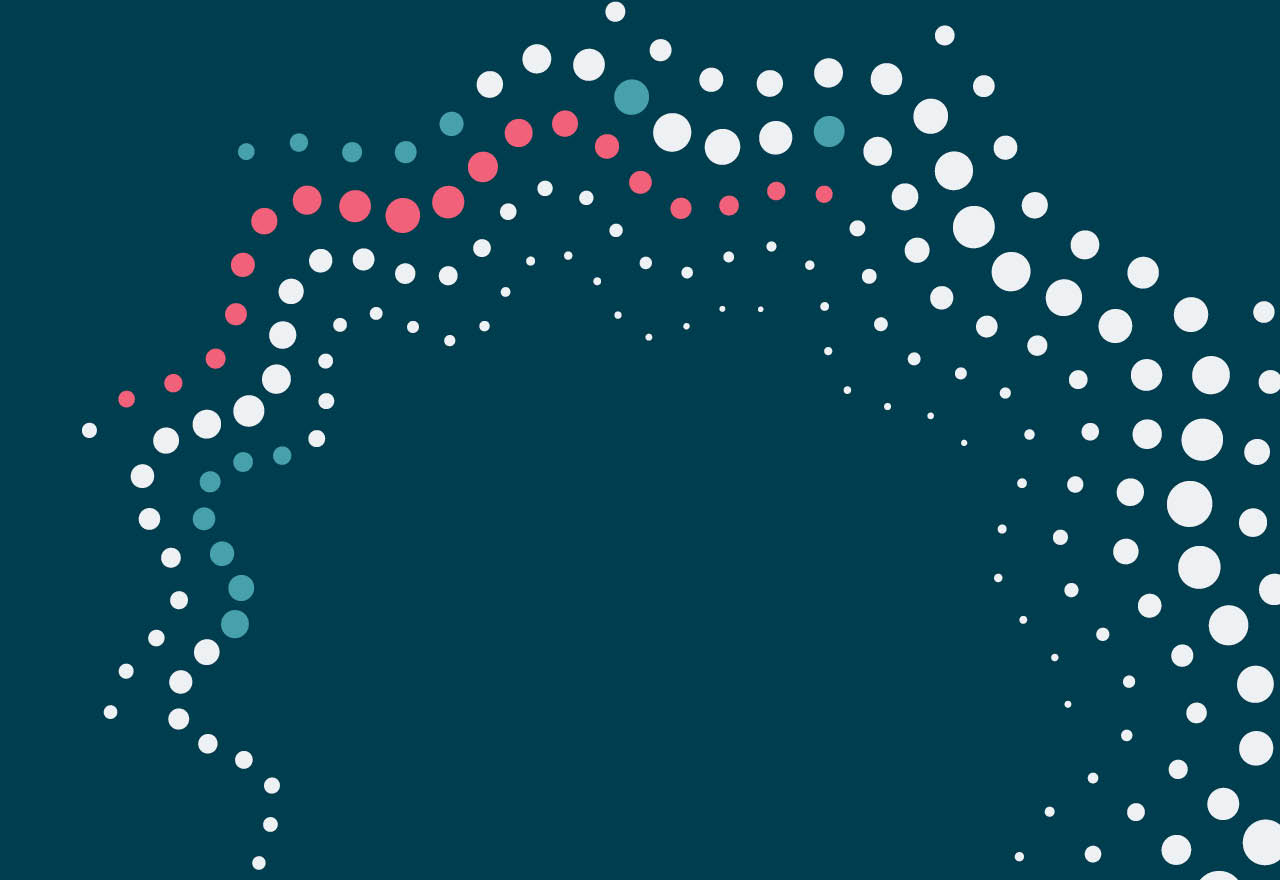Perspectives: Edition #36 | May 2025
AI-first software engineering: Development, evolved
In this edition of Perspectives, Thoughtworks experts draw on deep knowledge and recent experience applying AI to resolve major software challenges, to show business leaders how to leverage AI-first software delivery (AIFSD) in a responsible and holistic way.
Read time: 9 minutes | Short on time? View executive summary >
Contributors
Birgitta Boeckeler
Global Lead for AI-Assisted Software Delivery at Thoughtworks
Alessio Ferri
Lead Software Engineer at Thoughtworks
Martin Fowler
Chief Scientist at Thoughtworks
Key highlights
- Beyond coding: AIFSD offers transformative potential for all kinds of software delivery processes, not just coding assistance.
- Rethinking benefits: Productivity gains are just the tip of the iceberg. AIFSD enhances critical processes, driving long-term improvement.
- Engineers empowered, not replaced: AI strengthens established principles while pushing engineers to adapt and expand their skillsets.
- Careful monitoring is key: AI tools can amplify solutions and problems. Quality output demands vigilance and high-caliber code inputs.
- Future-forward potential: AIFSD is evolving rapidly to tackle complex tasks—for those ready to lead the charge.
An accelerating journey
AI continues to fuel debates – over whether it’s transparent or fundamentally untrustworthy; whether it will make people more, or less clever; and whether its overall environmental impact will be positive, or negative. But on one thing there’s broad agreement: Software development is the function driving enterprise adoption of AI, and where AI is likely to prove the most transformative in the near term.
Though it might still be too early to call it a revolution, Martin Fowler, Chief Scientist at Thoughtworks, believes this shift could prove as significant as the transition from assembly to high-level languages. “AI-first approaches could completely change the way people think about programming,” he says.
Confidence that software engineering is AI’s first real ‘killer app’ has already prompted a tidal wave of investments into coding assistants. Cognition, the developer of what it bills “the world’s first AI software engineer,” was recently valued at US$4 billion. Surveys have indicated over 90% of software developers already use AI tools in some capacity, both inside and outside of work.
Developers are embracing AI coding assistants


But with this trend comes a number of tricky questions:
What role should AI play in the development process, and where in the lifecycle is it most effective?
What risks come with relinquishing more aspects of software development and engineering to AI tools?
How does the role of human talent change in an increasingly AI-powered space?
How long can the answers to any of the above hold true as technology continues to evolve?
Based on their early work in AI-first software delivery (AIFSD), Thoughtworks practitioners have reached a number of conclusions that they advise engineers and business leaders to bear in mind:
AI adoption is not as advanced as it might initially appear. “Most developers and engineers are applying purpose-built AI tools that are small in scope to a limited subset of coding,” Fowler points out.
AI-first software delivery goes beyond coding. ‘Real’ AIFSD is an end-to-end, collaborative and iterative process that’s designed to leverage the potential of AI from the ground up - from framing the scope of a software product, all the way to long-term support and maintenance. Coding assistants can serve as a gateway to this process, but “only a small number of organizations are trying to do more than that, or to treat AIFSD as more than the introduction of a tool that doesn’t require any change management,” says Birgitta Boeckeler, Thoughtworks’ Global Lead for AI-assisted Software Delivery.
“There’s significant potential in the testing space, but the barriers are that in some areas, the tools are not quite there yet - or people are waiting for specialized tools when they might not have to,” she adds. “Chatbots for advanced features can actually get you quite far in areas like analysis and requirements descriptions, and come with a very low barrier to experimentation.”
Legacy modernization is where AIFSD could have the most impact. Changing competitive realities and the rise of AI have made modernization a more urgent priority for businesses, but reforming the legacy tech estate remains a formidable task. AIFSD promises to help enterprises address this challenge.
“(AIFSD) will significantly accelerate reverse engineering, so we’re no longer spending months just trying to understand the scope of a system, or locked in ‘analysis paralysis,’” explains Alessio Ferri, Lead Software Engineer at Thoughtworks. “We can use the time we gain to go deeper or wider, ultimately learning more about what we’re working with and further de-risking the whole modernization program.”
Defining the benefits
So what accounts for the strong appetite to apply AI in software engineering, even if only in a limited way? For most businesses, potential productivity gains are the main consideration. There’s already evidence these gains can be quickly realized, with one study showing developers using GitHub Copilot completed tasks 55% faster than their non-AI-assisted counterparts.
However, Thoughtworks experts point out that productivity is a difficult quality to measure, and is subject to a wide range of variables. While Thoughtworks’ experience with clients has indeed demonstrated AIFSD saves time, productivity may also depend on factors like developer experience, or the complexity of the challenge being addressed. The benefits of AIFSD need to be viewed more holistically, and also understood as potentially more transformative.
Acceleration can impact not just the development of software, but the whole software feedback loop.
“Acceleration can impact not just the development of software, but the whole software feedback loop, including putting things into production, learning from that and changing the business’s processes and growth trajectory,” Fowler points out. “In that sense, the effects of AIFSD can be dramatic – it affects costs, but also what you can do. Once you’re able to move faster, many other things change as well.”
“There’s a big focus on speed, but also significant potential for AIFSD to make knowledge management easier for developers, enhancing onboarding and staff mobility,” says Boeckeler. “It introduces not just new ways to write code, but also new ways of finding and accessing information.”
It introduces not just new ways to write code, but also new ways of finding and accessing information.
Boeckeler also notes that as AI tools grow more sophisticated, they can give engineering teams the ability to simultaneously tackle much larger problems. Beyond simply recommending code for a single method or function, newer AI agents can handle complex tasks like exposing a new data field in an API, by changing files, running tests and preemptively addressing any errors that result.
“The basics are all automated, but human engineers supervise and adjust the results,” she explains. “Some teams are already using agents 100% of the time, and in certain cases, that gives them an 80% productivity boost.”
These kinds of advances have been borne out in recent Thoughtworks client projects that drew on AIFSD approaches, including:
Revolutionizing reverse engineering for a major global automaker: A luxury carmaker undergoing a comprehensive modernization program was struggling with the task of deciphering its 15 million-line code base, with reverse engineering 10,000 lines of code taking two people six weeks on average.
Thoughtworks’ AI-powered CodeConcise Legacy Assistant was applied to generate documentation equivalent to this output, and suitable for forward engineering in just a few hours. Even factoring in an additional two weeks for expert validations, the time required for the entire process was cut by two-thirds. According to client estimates, using CodeConcise to generate documentation across the entire modernization program could have saved around 60,000 days of effort.
Boosting bug detection for a global data provider: For a Thoughtworks client whose business depends on delivering accurate, real-time data that can impact financial and other decisions, minor errors or downtime can quickly snowball into major risks. Thoughtworks leveraged CodeConcise for this global information provider to streamline the detection of bugs, even one of which can cost the company vast amounts of revenue.
The complex structure of the company’s core platform meant issues traditionally took around eight days just to identify, but CodeConcise reduced that to three hours – a huge gain from the business perspective. “CodeConcise has also helped onboard people who aren’t necessarily familiar with the code base, allowing them to contribute to finding and resolving problems,” adds Ferri, who worked closely with the client throughout the project.
Engineering, and engineers, redefined
AIFSD will have significant implications for the software engineering discipline, and engineers themselves. However, Thoughtworks expects many time-tested principles will remain true, and might even gain new relevance.
Take agile, which Martin Fowler helped initially articulate as a co-author of the Manifesto for Agile Software Development. “The core idea of agile is doing small increments, with heavy contact with the business and the users, and making that part of your core feedback loop,” he says. “There's a strong synergy between agile and what you can do with AI simply because it will speed up that feedback loop – and the more you can speed that feedback loop up, the greater the consequences.”
Boeckeler believes test-driven development is likely to be among the practices AI affects most, even if it’s not yet clear if it will be for the better, or the worse.
“Test-driven development is based on the principle of advancing with baby steps,” she explains. “Good design is driven by writing the test first, because that forces developers to think about their specifications and what they actually want to achieve. But now AI can just generate tests, code and entire functions in one go. Is that a good thing or a bad thing? And in which situations should that be used?”
One concern is that the ease and speed made possible by AIFSD could breed complacency. “It’s become so quick and easy to build and put in features that engineers aren’t always conducting proper analysis of what a complete, well-rounded feature would be, and what other consequences it might have, because it was never originally properly planned or prioritized in the product roadmap,” Boeckeler says. “In that sense, AI-accelerated development can suddenly create a tail end that a team has to come in and clean up.”
Speed doesn’t necessarily mean you scale back the team; it can also mean you do more with the same amount of people.
“Speed doesn’t necessarily mean you scale back the team; it can also mean you do more with the same amount of people,” she explains. “There’s always a backlog of more to do. Organizations are sitting on a mountain of accidental complexities that have been building up for decades, and many of our clients are struggling to get things out the door because of an existing estate that’s getting harder and harder to maintain.”
What will change with AI are the capabilities engineers need to bring to their roles.
“People will have to learn different things, like the formalisms of the high-level programming languages, how to interact with LLM tools, and dealing with the fact that non-deterministic systems are producing code that will run deterministically,” says Fowler. “Knowledge about what good APIs look like, and how to separate things into modules could become a major part of the role. Somebody coming into the profession now might learn different skills and ways of working, but could have an advantage because they won't come with any ballast.”
For now, rather than aiming to retool teams entirely, Thoughtworks experts advise businesses to build AI-readiness by encouraging experimentation, which is an essential step on the road to adoption.
The essential dimensions of AI adoption


Source: May Xu, Head of Technology, APAC, Thoughtworks
“Many large organizations don't have a playground where developers can experiment with AI,” Ferri points out. “People need to be able to make mistakes. The question is how you allow for safe mistakes to happen, so that you can learn about the impact on the organization and the data that the organization controls.”
“You have to use AI for a while to get an intuition for when to reach for it,” agrees Boeckeler. “There’s a lot of social learning. Sharing stories with each other about challenges and achievements is a huge lever. Structured training programs can only get you so far, because the space is changing so fast under your feet.”
The question is how you allow for safe mistakes to happen, so that you can learn about the impact on the organization and the data that the organization controls.
Longer-term, AI could vastly enhance knowledge and skills transfer, as well as the capacity of development teams to play a more strategic role in the organization.
“We’re rising to an abstraction level that allows developers to spend less time persuading the computer to do what they need it to do,” says Fowler. “That implies more time for high-level thinking, but also for more collaboration with business, which has always been the crucial bottleneck. This increases the importance of software developers thinking of themselves as people who work very closely with the business side. A good business analyst who is able to learn to work with AI tools could be as effective as a programmer working more on the BA side, and I expect we’ll see a fusion of those kinds of roles.”
“A lot of the knowledge about an organization itself lies only in people's heads, which aren’t easy for an AI to get access to,” says Ferri. “Usually, the people with the most organizational knowledge are super busy and spread thin, just keeping the lights on. We can use generative AI to support these people in their work, and to take some pressure off their shoulders.”
“If instead of relying on a certain SME to answer questions, you can insert a simple chatbot in the process that performs that task, you’re going to improve the SME’s bandwidth,” Ferri adds. “Now they can apply their knowledge not only to support other people in the organization, but to help shape the future, because they know the most about the strategy and where the organization is going.”


Let's imagine software engineering with AI, together.
Raising awareness, preventing risk
With AIFSD growing more mainstream, Thoughtworks recommend working proactively to raise awareness of the risks involved – arguably the biggest of which is the acceleration of errors along with everything else.
In one recent study, just under 70% of developers reported AI tools had increased the amount of time they spent debugging code or addressing security vulnerabilities, while 60% admitted their organization lacked processes to evaluate the overall effectiveness of these tools.
Similarly, analyses of Git repositories point to a recent rise in ‘churn’ – changes to code that are subsequently changed again, which can be an indication of corrections and issues with code quality that may build over time.
Rising code churn signals growing software quality issues


Source: GitClear
“The tagline we've been using from the start is that Gen AI amplifies indiscriminately,” says Boeckeler. “When you ask it to generate code, it doesn’t distinguish between good and bad, and when you have bad quality code, it's going to amplify that.”
“If you don't pay attention to what AI does, because of the volumes it can produce, it will be death by 1,000 paper cuts,” says Ferri. “If we don't question what it does, slowly, over time, thing will get worse and AIs will stop performing so well. You’ll see a degradation of quality to the point that the code is so bad that AIs can no longer build on it.”
The only real response to this is constant vigilance. “It’s almost like firefighting, making sure that you know exactly what the AI is doing so you don't get caught out later on, when it's potentially too late,” Ferri explains.
Organizations can also avoid problems by adhering to sound engineering principles that ensure AI tools are working with a good base of code to begin with, thus avoiding the vicious cycle of ‘garbage in, garbage out.’
“All signs so far show that if you have well-constructed code, modular approaches, and all the other good practices we tend to emphasize, that makes it much easier for the AI to work with and minimizes issues down the line,” says Fowler.
The need for supervision further underlines the essential role of human expertise in AIFSD, Ferri points out.
“Some organizations are envisioning the equivalent of lights-out factories, where the AI takes over and no humans are needed,” he says, “But those factories are designed to produce specific things that are self-contained and repeatable. If we do a good job of categorizing what those things are in the development life cycle, and we can automate checks and guardrails, perhaps we can have autonomous agents handling those functions. But with very few exceptions, we’ll need humans in the loop. It’s not optional.”
Future use cases
While it presents risks, the way AIFSD is evolving–and the advances it makes possible–mean it’s only set to expand. Thoughtworks predicts progress will pick up on several fronts:
Enhancing decision-making: “I see a role for AI assisting with architecture decisions, helping us understand the best methodologies, practices and mental models we can apply to a situation,” says Boeckeler. “There might even be a prompt that lets you talk this through, to improve learning and steer people away from pitfalls.”
Powering the ‘thin-slice’ approach to modernization: “When we modernize legacy systems, we take an incremental approach, and a key part of the process is identifying what those increments are,” Ferri notes. “With each increment, we have to make tradeoffs around how big or small it should be compared to the overheads required to have it go live. AI could help with that by handling some of the overhead for us, allowing us to take bigger bites of the legacy system and shorten the modernization journey, or conversely to take smaller bites to derisk the program even further.”
Upgrading exploratory testing: Ferri notes that while the process is now primarily human-driven, AI could be leveraged in parts of exploratory testing to highlight paths left unexplored because of human bias, or improve methods of interaction. “We’re already seeing AIs run deterministic tests, where they give feedback, and agents can be used to self-heal either the test or the code itself,” he says. “AI is also being used to predict when issues will come up, to establish what good, healthy patterns are, and can react when those patterns are not there anymore.”
The upshot is that engineering teams and organizations will have to brace for more AIFSD-driven impact, but Fowler urges businesses to continue to focus on the opportunity, and above all, to maintain an open mind.
Successfully leveraging AI, he says, “comes down to being prepared to experiment. In a situation of rapid change, you've got to be ready to try a dozen different things, knowing that most of them won't work - but that's the only way you're going to discover the things that do.”

"In a situation of rapid change, you've got to be ready to try a dozen different things, knowing that most of them won't work - but that's the only way you're going to discover the things that do."
Martin Fowler
Chief Scientist, Thoughtworks
Next steps
Make the next step towards empowering your engineering function with AI.
Contributors
Birgitta Boeckeler
Global Lead for AI-Assisted Software Delivery
Software developer, architect and technical leader who is passionate about helping teams and organizations break down complexity, and find new perspectives to look at their systems.
Alessio Ferri
Lead Software Engineer
Developer and passionate technologist who enjoys using his experience to help clients solve tough engineering challenges.
Martin Fowler
Chief Scientist
Author and international public speaker on software development, specializing in agile software development methodologies, including extreme programming.
Related reading
-
 ReportThe rise of the codebots: How AI is changing software developmentRead report
ReportThe rise of the codebots: How AI is changing software developmentRead report -
 ArticleLeading through change: Navigating the landscape of AI tools for software deliveryRead article
ArticleLeading through change: Navigating the landscape of AI tools for software deliveryRead article -
 Client storyDriving excellence with operational transformation and AI-powered customer serviceRead client story
Client storyDriving excellence with operational transformation and AI-powered customer serviceRead client story
Subscribe to Perspectives to stay ahead of the curve.
Get timely business insights, expert analysis, and industry updates delivered to your inbox when you need them—no noise, just value.
(* Required fields)






















